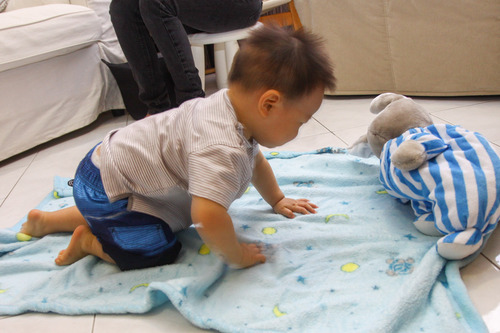I had a well-paying job, my work hours were excellent, I was allowed to work from home, my colleagues were intelligent and fun to work with, my boss was very reasonable and understanding, I enjoyed my work tremendously. Then I decided to say goodbye to it all and become a Stay-At-Home-Mum (SAHM).
Needless to say, it was an incredibly difficult decision to make. I was almost equally torn between 2 choices but in the end, I chose the path which I wanted MORE. I’m sure many working mothers face this dilemma so I’d like to share 5 key things which I think should be considered before deciding whether to make the plunge.

1. Consider your financial situation
It pays to be practical. Planning finances may not be the most exciting or adventurous thing to do (especially if you don’t have an interest in it) but it may be the best thing to do just yet. The realities of life cannot be avoided especially when you have a baby and medical bills to pay. If your spouse / partner is going to be the sole breadwinner, you’ll need to figure out how to keep the monthly expenses going without dipping into your savings as much as possible AND building your child’s education fund. Then, there is also the matter of lifestyle and the extent to which you can tolerate cutbacks.
2. View it as a trial period by giving yourself a timeframe
So maybe you’ve figured out how to keep the household going on a single income, but you’re still apprehensive. Perhaps you should view your decision to stop work as a trial period rather than a permanent condition. You could set yourself a timeframe for you to pause and take stock once again. A reasonable timeframe would be 6 to 12 months. After 6 months, it would probably be a good time to do a reassessment of your decision to be a SAHM and how the household is managing financially and emotionally. It would be a good idea to have a Plan B in place – say, after 1 year, if things are not going as I planned, I would like to return to the workforce.

3. Have an open mind when dealing with family members
It will be very typical of your parents and possibly even your in-laws to nag. “How can you do this to your child?” and “How can you leave the burden all to your husband?” might even be some of the ironic statements that you have to stomach. As harsh as their words may seem, they only mean well. The harsher the words, it only means the more Asian your family is, and the more well-meaning they are. Elderlies have gone through life a lot longer and their words are shaped by their personal experiences so it would be good to understand things from their perspective just to make sure you’ve thought about your decision from all angles.
4. Create a plan with tangible milestones
Perhaps you are the career woman type and are secretly worried about the monotony of being a SAHM. Well, just like how you would at work, define a plan of what you intend to achieve outside of the household. It can be as simple as finishing one book every week or operating a business from home within 6 months. The key is to set yourself a deadline (just like at work) or you will find that the goalpost will keep shifting. Perhaps sharing this plan with your family members might even reduce some of that nagging!

5. Use the 80-20 rule
Still indecisive? Evaluate how you feel 80% of the time. Out of a 5-day work week, how do you feel? If on Monday to Thursday, all you feel is a strong need to be with your child, then the answer is pretty obvious! I’ve put this factor as the final consideration simply because we humans tend to get easily swayed by our emotions! If this were the first consideration point, I think many of us would be handing in our resignation letters tomorrow and you would not bother reading the rest of this post. However, life can be brutal if we don’t consider our decisions carefully hence I have chosen to line up the other 4 consideration points first before giving in to emotions!
All the best and may your decision be informed and well thought through!
–
First published on 22 January 2015.
–
Grace Ch’ng is a management consultant turned homemaker. She is also the founder of Gracious Little Things – a blog aimed at helping fellow parents and the owner of Little Baby Grains – a provider of grains suitable for babies from 6 months onwards.
Related Posts:














